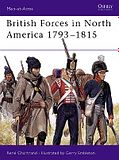
During my trip outside the Pale over the weekend, I spent my time profitably; reading the above title which I picked up from book depository for a tenner. Leonaur came up trumps again - this time serving up a book about the second Sikh War, a subject which I only discovered a few years ago and which has fascinated me ever since.
A dull fellow would say that he can download the book for free, but that's the sort of thinking that would have left Kinch bereft and staring at his empty hands on the train, so we'll say no more about it. Books; physical books, things of paper and paste board are a joy unto themselves and fie upon those who say differently.
Curiously, the publisher has removed the subtitle (which can be viewed on the online version) which indicates that this volume is quite humbly only offering itself as an addition to Thackwell's "The Second Sikh War". The author served in the 24th Foot during the war and wrote it to put right some points where he felt Thackwell had either wandered off the point or made an ass of himself.
According to an article I found online, the author was a Masonic gentleman who was comissioned in 1840 into the 39th Foot and retired on half pay in 1869 having served extensively in India. He wrote on orders of chivalry, history and antiquarian topics.
What you get for your tenner is a two hundred page perfect bound book. The author's observations take up the first ninety pages, while the second half is taken up with primary sources, despatches and the like, all of which are of interest.
To begin with there are the maps, which are very poor. They are obviously copies which have been rather inexpertly enlarged in such a way as to make the legend almost impossible to read. Poor show Leonaur, I have come to expect better of you. A wise reader will print out copies from the digital version or will be sufficiently familiar with the battles already.
Which brings me to my second point, because this book is an adjunct to Thackwell's history - the author assumes a familiarity of the campaign that the general reader is unlikely to have. Though I can't imagine many readers of this book being unacquainted with the Sikh War.
The author is very critical of Lord Gough, who he felt was more lion than fox; relying too much on the bayonet as the weapon of decision and not making full use of his artillery. I've often heard this criticism repeated and in some ways it is quite reminiscent of the criticisms of Grant during the American Civil War. The criticism may have been merited, but it is hard to replace a general who wins.
Curiously for a book billed as an eyewitness account, there is very little use of the first person in the text which is for the most part limited to general observations on the campaign. Where the narrative really shines is in the chapters on the Battle of Chillianwallah. The authors regiment took part in a controversial charge during this battle and lost one of its colours, which would leave anyone with a great deal of explaining to do. The authors observations on jungle fighting in the horse and musket era also repay study.
In conclusion, this is a book for the Sikh War completist only and useful mainly for the chapters on Chillianwallah and for the collected dispatches.









































My first brush with the Sikh Wars ( as with most of the Victorian era's military campaigns) was Flashman; namely the Mountain of Light.
ReplyDeleteI've since read other accounts of the campaigns, but not a primary source as this purports to be.
One day when I've done all there is, or, God forbid, get bored of the Napoleonic period, I think the early to mid Victorian era would be my next challenge wargaming-wise.
Thanks for the review.
Thank you for the review, Conrad.
ReplyDelete-- Jeff
Nice review, I'll need to look for that sooner than later.
ReplyDeleteDon
Good review thanks for sharing this!
ReplyDeleteExcellent review,Thanks!
ReplyDelete